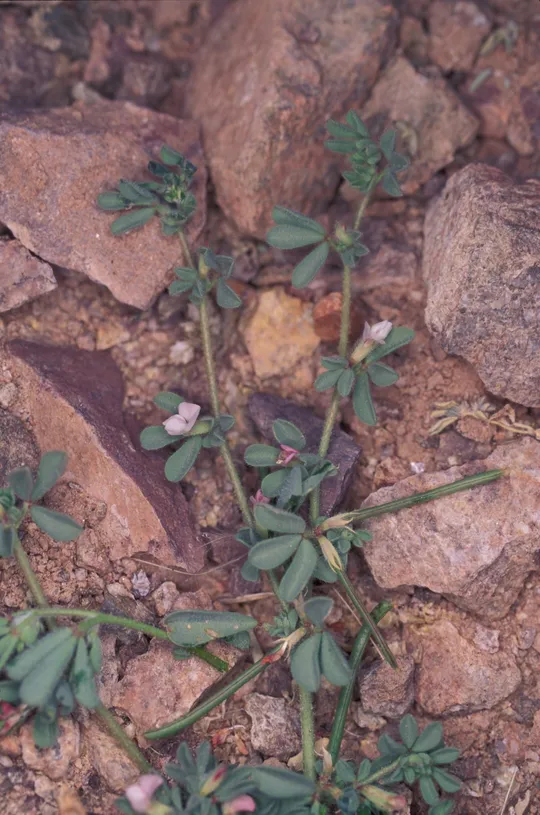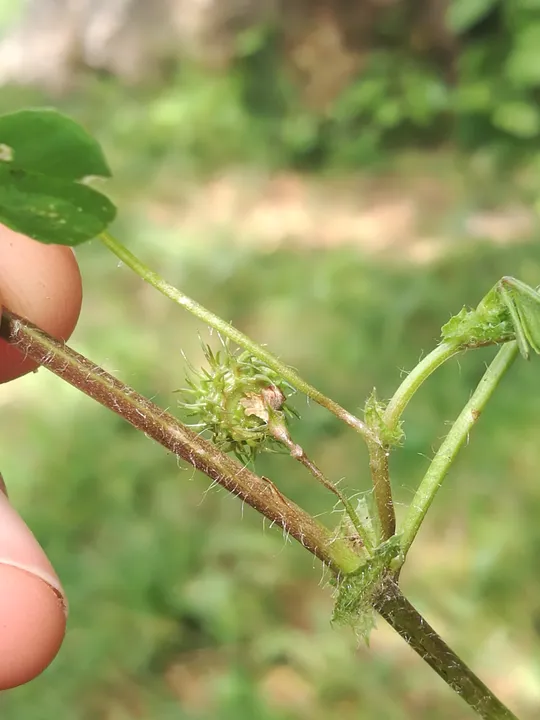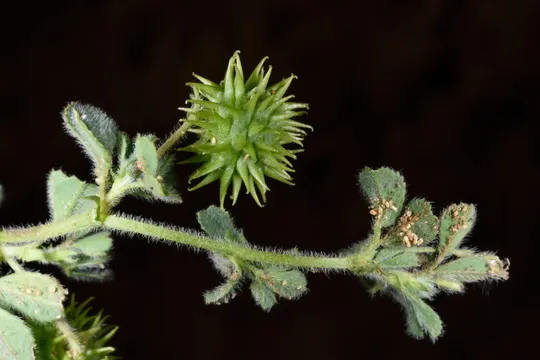Grey Birdsfoot Trefoil, Downy Bird's Foot Trefoil
Lotus cytisoides
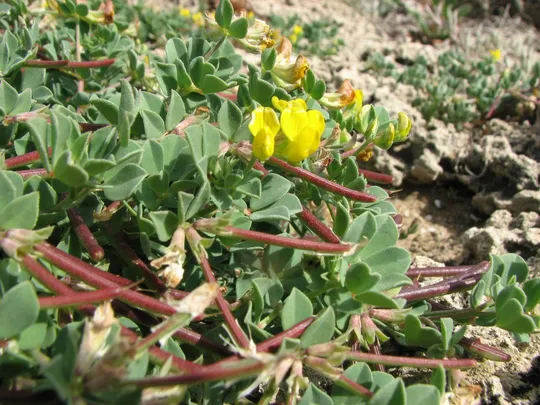
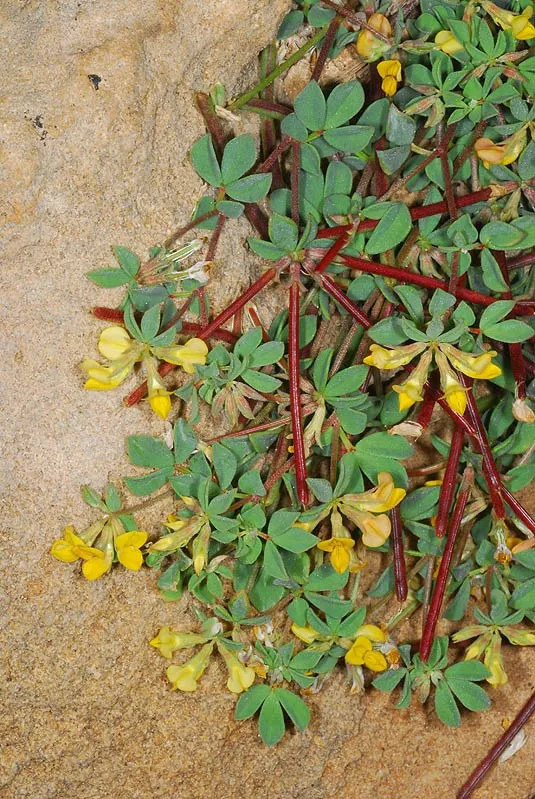
Lotus cytisoides is found in Israel in two regions of
the Mediterranean spray zone. Large populations are found in the Acre Valley
from Shave Tsion through the Akhziv Beach, and up to Rosh HaNikra. It was collected
from the Acre area in the 1940s, but has not been found there since. There are
isolated populations on the Carmel Coast at Neve Yam and in the Dor-HaBonim
area. The existence of the species in the Sharon is doubtful since it is not
supported by evidence in the Jerusalem Herbarium. A total of nine sites are
known with certainty.
Rock fissures in calcareous
sandstone in the spray zone along the coast. In this habitat Lotus cytisoides can occasionally be found in sand patches
and dunes as well. In Egypt and Tunisia it grows in exactly from the same
habitat.
There are about 100 species in the genus Lotus,
whose distribution is in temperate northern regions of the globe. The close
genera are Tetragonolobus and Dorycnium. These genera have a characteristic pollination
piston-like mechanism, in which the pollen powder from the five upper stamens
is compressed by the growth of the lower stamens that sweep the pollen from
them to the edge of the keel. The pollen is released in limited portions through
the fissure at the edge of the keel when visiting insects press on the center
of the corolla, in a manner similar to squeezing toothpaste from a tube. This
mechanism is also found in the genera Lupinus and Ononis.
There are 14 species of Lotus growing in Israel –
including annuals, perennials and shrubs. The specie closest to L. cytisoides
is L. creticus.
This species also has glabrous forms (Heyn and Hernstadt, 1967). According to
the Flora Palaestina and to literature from other countries, L. cytisoides also has
different degrees of hairiness, but in Israel, hairiness was found only in a
single herbarium specimen from the Netanya coast. According to the literature, L.
cytisoides also differs
from L. creticus in its flower: the keel of the flower in L. cytisoides is markedly convex, while in L.
creticus
it is straight
•
Lotus cytisoides
grows in two regions, and apparently there has been no change, since the little
data available on its existence in a third region – the Sharon – is doubtful.
•
The species was
not found in surveys in some of the sites from which it had been reported in
the 1980s and in subsequent visits in the 1990s, so there is concern that the
plant has become extinct on some of these sites.
•
The L. cytisoides
populations' are sparse, and population size at most sites is estimated at a
few dozen to 100 plants. There is, however, insufficient information available
on long-term change trends in the populations.
•
Intensive human
use of the seashore in the Acre Valley and Carmel Coast regions is the main threat to the continued existence of populations at the
sites where it is found. Development within the Akhziv and Dor-HaBonim coastal
reserve is likely to endanger the existence of populations.
•
In the Acre Valley
L. cytisoides is protected in the Akhziv Beach National Park and on the Carmel Coast
in the Dor HaBonim Beach Reserve.
•
L. cytisoides
is endemic to the Mediterranean countries and grows on rocky shores. It unique habitat
– rocks on the seashore spray zone – is threatened by tourist development and
urban sprawl throughout the Mediterranean region. The species also appears on
the Cyprus lit of red species, with an IUCN classification of EN.
Monitoring
should be conducted on permanent plots to follow long-term trends in Lotus cytisoides
population size. All development activity in the Dor-HaBonim Beach and on the
Akhziv beach nature reserves should be prevented.
Lotus
cytisoides is found on the Mediterranean European beaches in Spain,
France, Italy, former Yugoslavia, and Greece; in the Mediterranean Islands – the
Balearic Islands, Sardinia, Sicily, Corsica and Crete. On the Mediterranean
coast of North Africa, it is present in Morocco, Algeria, Tunisia, Libya and
Egypt.
Lotus
cytisoides is a perennial plant from the Papilionaceae family
endemic to the beaches of Mediterranean countries. In Israel it grows on the
spray zone of the Acre Valley and Carmel Coast beaches. The number of sites in
Israel is small and located in areas sensitive to anthropogenic activity. The
species should be afforded a high conservation priority.
Heyn C.C. and Hernstradt I. 1967. The Lotus creticus group. Kew Bulletin, 21, 299-309.
Current Occupancy Map
| 1000 squre meter pixel | 5000 squre meter pixel | 10000 squre meter pixel | |
|---|---|---|---|
| number of observations | 0 | 0 | 0 |
| in total pixels | 0 | 0 | 0 |
| Family | Fabaceae |
| Classification | On the endangered species list |
| Ecosystem | Mediterranean Coast |
| Chorotype | Mediterranean |
| Conservation Site | Akhziv Beach |
| Rarity |
1
3
6
|
|---|---|
| Vulnerability |
0
4
4
|
| Attractiveness |
0
0
4
|
| Endemism |
0
0
4
|
| Red number |
1
4.2
10
|
| Peripherality | W |
| IUCN category | DD EW EX LC CR EN VU NT |
| Threat Definition according to the red book | Endangered |
 Based on:
Based on:
